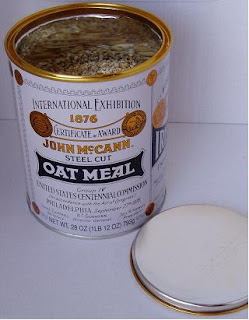I recently finished reading
Alice Waters and Chez Panisse, Thomas McNamee's authorized biography, which was published in 2007. Shamefully, I have to admit that I did not know much about Ms. Waters, or Chez Panisse for that matter, before I picked up the book. Of course, both Alice (as she is referred to throughout the book) and Chez Panisse had reputations that preceeded them. I knew that Alice was considered a pioneer and champion of the local and organic food movements. I knew that Chez Panisse was an institution in the United States, if not the world. And I knew that as a person who is passionate about food, it was a travesty that I didn't know more. So I started reading.
It soon became obvious to me that it was quite fitting for me to be reading this book as I was embarking on two simultaneous journeys: beginning these writings dedicated to simple, accessible, beautiful, and (when possible) local, organic food, and, crossing the country to taste the offerings of a city that embraces that notion (in Portland). In fact, our meal at
Beast easily embodied the Chez Panisse way, and if I had any doubts, I had but to count the Chez Panisse cookbooks included in the stack above my head as we enjoyed our artisan cheeses. But, I digress.
Within the first two pages of the book, R.W. Apple, Jr. proclaims, as part of the foreward, that Alice Waters "is no chef". What? For someone who had only heard of Alice Waters referred to as a chef, this was enough to knock me off balance a bit. But in continuing to read, I began to understand. Yes, Alice Waters is able to cook, undoubtedly much better than the majority of us, but it is not her talents in the kitchen that have led to her being credited with creating a food revolution in the United States. McNamee highlights many of Alice's more favorable qualities - an exceptional palate, an eye for creating a certain ambiance, a unique sense of style, an ability to recognize potential in others, an untiring persistence, a subtle but undeniable magnetism. It is this last characteristic that seems, in McNamee's description, to be much of the secret behind Alice Waters's success. Above all, perhaps even above her untiring persistence, Ms. Waters seems to be shockingly capable of using her support system to make her visions come to life, even when those visions seem to be completely illogical, impractical, or just plain impossible.
McNamee's book tends to be very complimentary of Alice Waters, though contradictory views are presented. At first, those views felt somewhat self-conscious to me, as if provided purely for the sake making the claim that a balanced view was provided. But perhaps it is a credit to the writer that, in the end, I left the book feeling somewhat conflicted. Yes, Alice Waters may be all of those wonderful things, but she is also presented as an extreme perfectionist who has difficulty relinquishing control and who seems to pass off the "dirty work" to others. She has more than once been accused of taking credit for others' work. And, she sometimes seems to ignore reality in a way that would be considered foolish if done by anyone else but her.
Still, how can I not find kinship in this person who, like me, finds so much beauty in a single piece of the freshest watercress? How can I not feel anything but awe for a woman who was able to have such a profound effect on how I view food, despite the fact that I knew next to nothing about her? I cannot. And Thomas McNamee's book does well to bring home that point. Chez Panisse sought out local, seasonal, organic, and "heritage" ingredients at a time when it was unheard of to do so. The restaurant formed relationships directly with farmers, when dealing strictly with purveyors was the mandate of the day. And Alice herself is responsible, at least in part, for the popularization of farmers' markets, school gardens, "California cuisine", and "arugula" as a household word, just to start. Alice Waters may be a hero to many, but more than that, she is human. McNamee's book reminds us how much one little human can do.
 I have my dad to credit for introducing me to this Dave Lieberman recipe for a very simple, yet incredibly satisfying cauliflower soup. When finished, it is hard to believe that this soup contains not cream, but rather cauliflower, as the main ingredient! It is delightfully silky (as the name implies), and surprisingly rich - you won't miss the presence of meat or cream at all. I've found that the real secret to this recipe, though, is salt. Be sure to salt and pepper liberally before serving; It will make the greatest difference in the results. I add about 1 1/2 tsp. of salt and many, many turns from the pepper grinder.
I have my dad to credit for introducing me to this Dave Lieberman recipe for a very simple, yet incredibly satisfying cauliflower soup. When finished, it is hard to believe that this soup contains not cream, but rather cauliflower, as the main ingredient! It is delightfully silky (as the name implies), and surprisingly rich - you won't miss the presence of meat or cream at all. I've found that the real secret to this recipe, though, is salt. Be sure to salt and pepper liberally before serving; It will make the greatest difference in the results. I add about 1 1/2 tsp. of salt and many, many turns from the pepper grinder.







